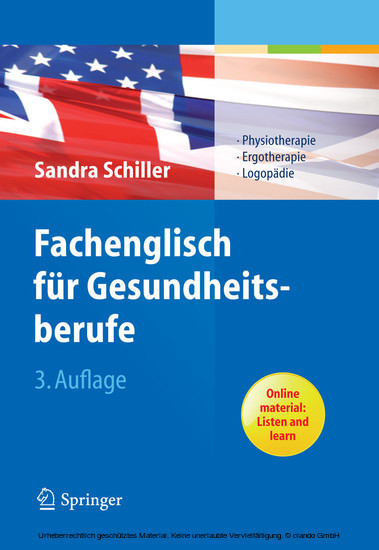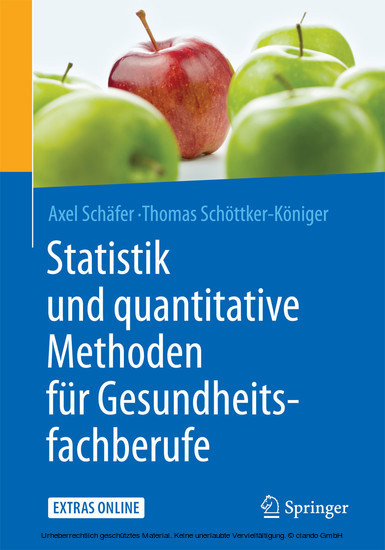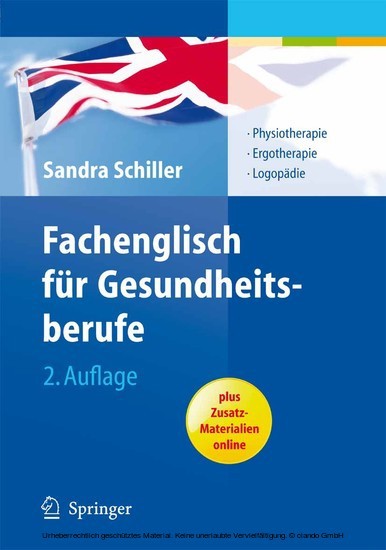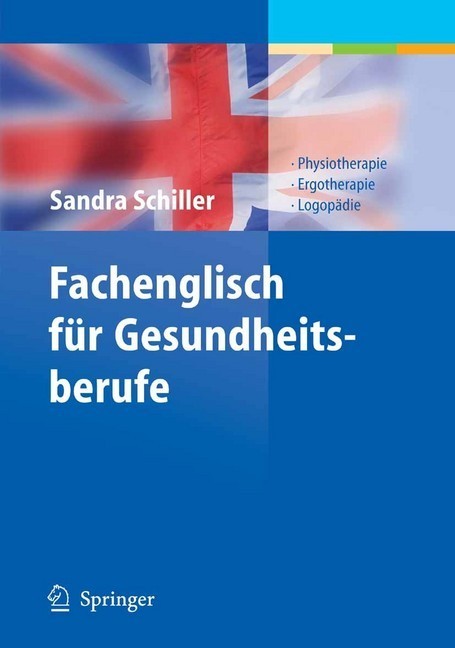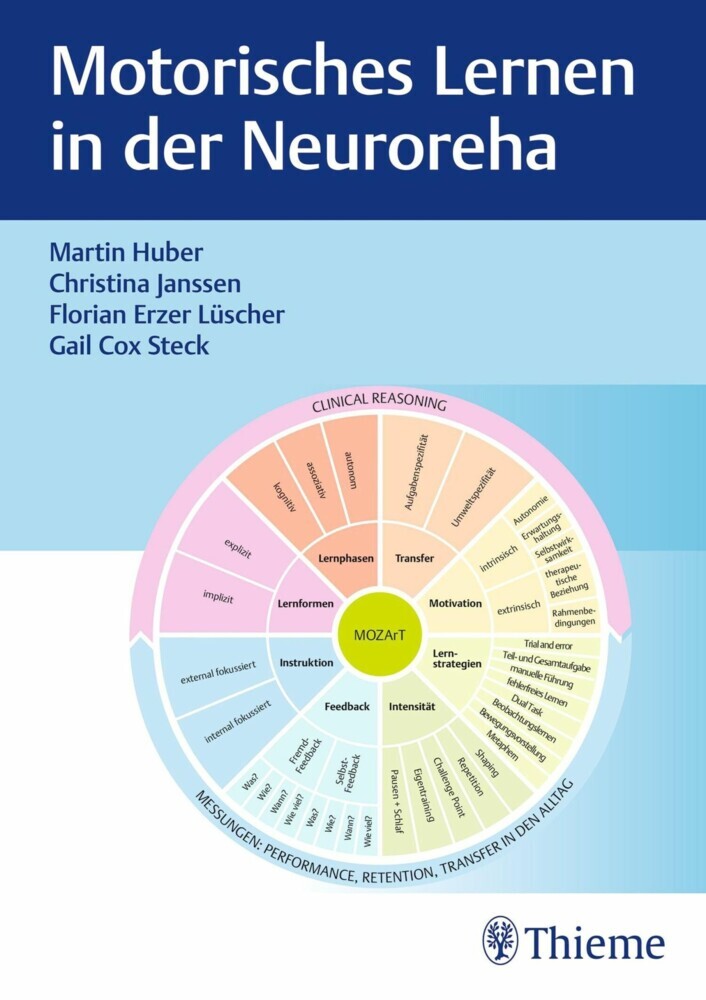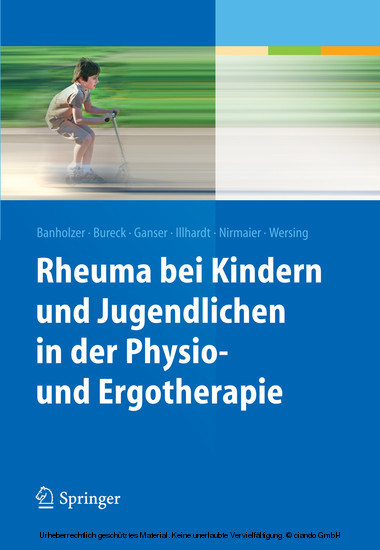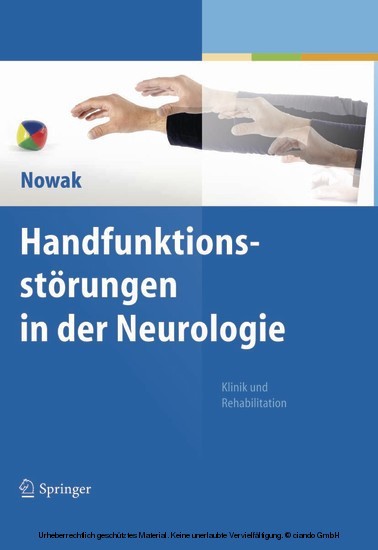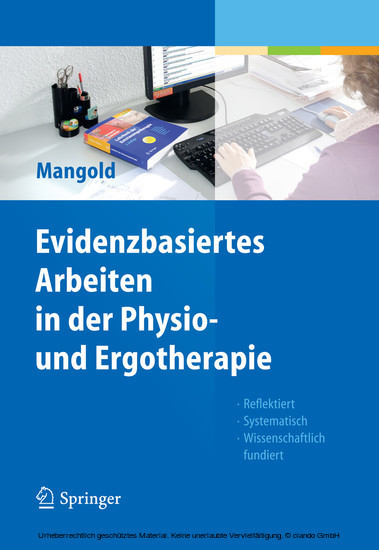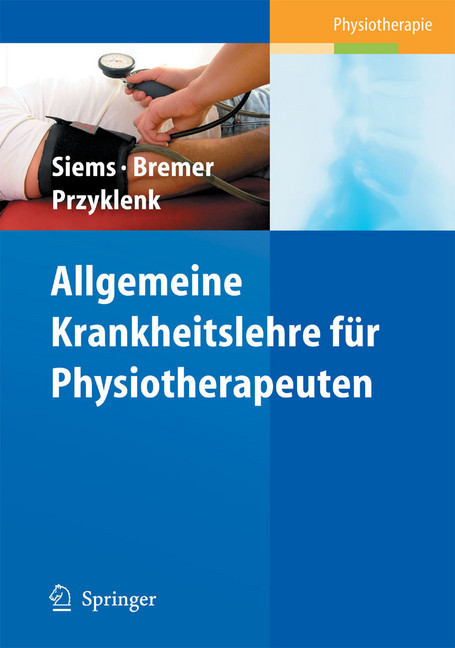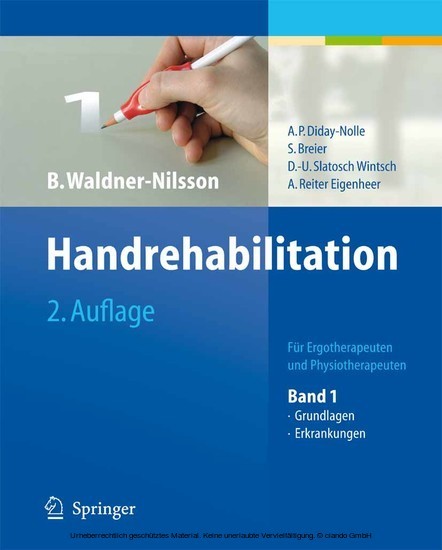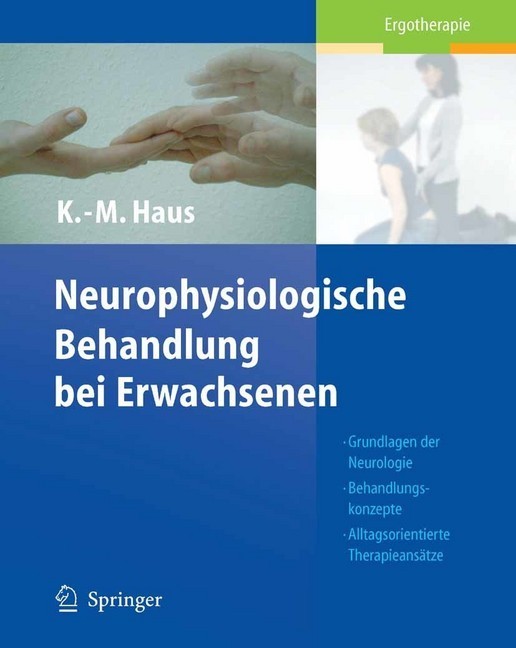Fachenglisch für Gesundheitsberufe
Physiotherapie, Ergotherapie, Logopädie
Das Fachenglisch-Lehrbuch für drei therapeutische Berufsgruppen vermittelt den im Berufsalltag relevanten Wortschatz, das Fachvokabular zu Krankheitsbildern sowie Informationen über das Gesundheitssystem in den angelsächsischen Ländern. Im Mittelpunkt steht das Training der aktiven Sprachkompetenz im Berufsalltag - für eine leichtere Kommunikation mit englischsprachigen Kollegen, ein besseres Verständnis englischsprachiger Fachliteratur und mehr Sicherheit bei Präsentationen. Kostenlose Internet-Downloads von Lesetexten und Übungen.
Nach Lehrtätigkeit an einer britischen Universität und einem Austauschprogramm für US-amerikanische Studierende ist Sandra Schiller seit 2002 am BSc- und MSc-Studiengang Ergotherapie, Logopädie und Physiotherapie an der HAWK Hildesheim/Holzminden/Göttingen tätig.
Nach Lehrtätigkeit an einer britischen Universität und einem Austauschprogramm für US-amerikanische Studierende ist Sandra Schiller seit 2002 am BSc- und MSc-Studiengang Ergotherapie, Logopädie und Physiotherapie an der HAWK Hildesheim/Holzminden/Göttingen tätig.
1;Vorwort zur 3. Auflage;7 2;Vorwort zur 1. Auflage;8 3;Acknowledgements;9 4;Weitere Beiträge;10 5;Contents;11 6;Unit 1: Health and Health Care;13 6.1;1.1 Not Feeling Well;14 6.2;1.2 Introduction to Health and Ill Health;16 6.3;1.3 Some Commonly Encountered MedicalConditions;20 6.4;1.4 Health Professionals;23 6.5;1.5 Types of Health Care Systems;25 6.6;1.6 The Health Care System of the UK:The National Health Service (NHS);28 6.7;1.7 Health Care in the USA;31 6.8;1.8 Health Services in the USA;36 6.9;1.9 The German Health Care System;38 7;Unit 2: Body Parts and Body Functions;40 7.1;2.1 Basic Anatomical Terms;41 7.2;2.2 Directions and Planes of Reference;43 7.3;2.3 The Parts of the Body;46 7.4;2.4 Compound Words in Anatomy;47 7.5;2.5 The Brain and Nervous System;49 7.6;2.6 Human Locomotion;51 7.7;2.7 The Physiology of Voice;53 7.8;2.8 The Larynx and Thoracic Cavity;58 7.9;2.9 Auscultation of the Lungs;60 7.10;2.10 Human Anatomy in English Proverbs andSayings;62 8;Unit 3: Places of Work and ProfessionalResponsibilities;65 8.1;3.1 Allied Health Professions;66 8.2;3.2 What Do Occupational Therapists,Physiotherapists and Speech and LanguageTherapists Do?;68 8.3;3.3 The Working Conditions of OccupationalTherapists, Physiotherapists and Speech andLanguage Therapists around the World;71 8.4;3.4 Occupation - Movement - Communication;72 8.5;3.5 Occupational Therapy Models of Practice;73 8.6;3.6 Therapeutic Treatment Methods inOccupational Therapy and Speech andLanguage Therapy;76 8.7;3.7 Physiotherapy Fields of Activity and ClinicalPractice;78 8.8;3.8 Working in Private Practice in the USA;80 8.9;3.9 Working for a School Board in the USA;82 8.10;3.10 Working in a Hospital in the USA;84 8.11;3.11 The Multi-Professional Setting within a Hospitalin the United Kingdom;85 8.12;3.12 Asking and Giving Directions;88 8.13;3.13 Working Shifts for Allied Health Professionals inPublic Hospitals;92 8.14;3.14 Instruments and Equipment in the Hospital;94 8.15;3.15 Health and Safety in the Hospital;94 9;Unit 4: Communicating with Patients -From Initial Assessment to Discharge;98 9.1;4.1 The Therapeutic Relationship and theIntervention Process;99 9.2;4.2 Making an Appointment;100 9.3;4.3 Case History;101 9.4;4.4 The Initial Assessment Interview - BasicInterview;103 9.5;4.5 The Initial Assessment Interview - DetailedInterview and Questionnaire;109 9.6;4.6 Documentation I - Case Notes and DiagnosticReport;114 9.7;4.7 Completing a Physical Examination;118 9.8;4.8 Clinical Reasoning Processes in ChestPhysiotherapy - An Excursion to RespiratoryPhysiotherapy Treatment;120 9.9;4.9 Interpretation of Test Results and Observations;123 9.10;4.10 Treatment and Treatment Plan;127 9.11;4.11 Documentation II - SOAP Notes;133 9.12;4.12 Documentation III - Progress Report andDischarge Summary;140 10;Unit 5: Interdisciplinary Collaboration -The Vocabulary of Health Professionalsin Multi-Professional Teams;145 10.1;5.1 Health Care Teams and Team Collaboration;146 10.2;5.2 The International Classification of Functioning,Disability and Health (ICF);147 10.3;5.3 Health Professionals and Attitudes towardDisability;149 10.4;5.4 Assistive Devices;151 10.5;5.5 Areas Covered in Rehabilitation Programmes;154 10.6;5.6 Team Conference on an Inpatient Sub-AcuteStroke Unit;156 10.7;5.7 Team Meeting for an IEP (IndividualizedEducation Plan) in the USA;160 10.8;5.8 Neurological Patient Admission to Hospital -Example of a Hospital Medical Ward Chart Note;163 11;Unit 6: Higher Education -OT, PT, SLT at University;168 11.1;6.1 Differences between School and University;169 11.2;6.2 Study Skills: Academic Reading;169 11.3;6.3 Study Skills: Academic Writing;172 11.4;6.4 Study Skills: Presentations and Discussions;175 11.5;6.5 A Short Overview of Higher Education in the UKand the USA;181 11.6;6.6 Doing a Bachelor's Degree - An OccupationalTherapy Student's Perspective;185 11.7;6.7 Doing a Master's Degree - A Speech-LanguagePathologist's Experience;187 11.8;6.8 The International Perspective on
Schiller, Sandra
Kritter, Christina
Holzknecht, Judith
Mohr-Modes, Barbara
| ISBN | 9783642172922 |
|---|---|
| Artikelnummer | 9783642172922 |
| Medientyp | E-Book - PDF |
| Auflage | 3. Aufl. |
| Copyrightjahr | 2011 |
| Verlag | Springer-Verlag |
| Umfang | 245 Seiten |
| Sprache | Deutsch |
| Kopierschutz | Digitales Wasserzeichen |

